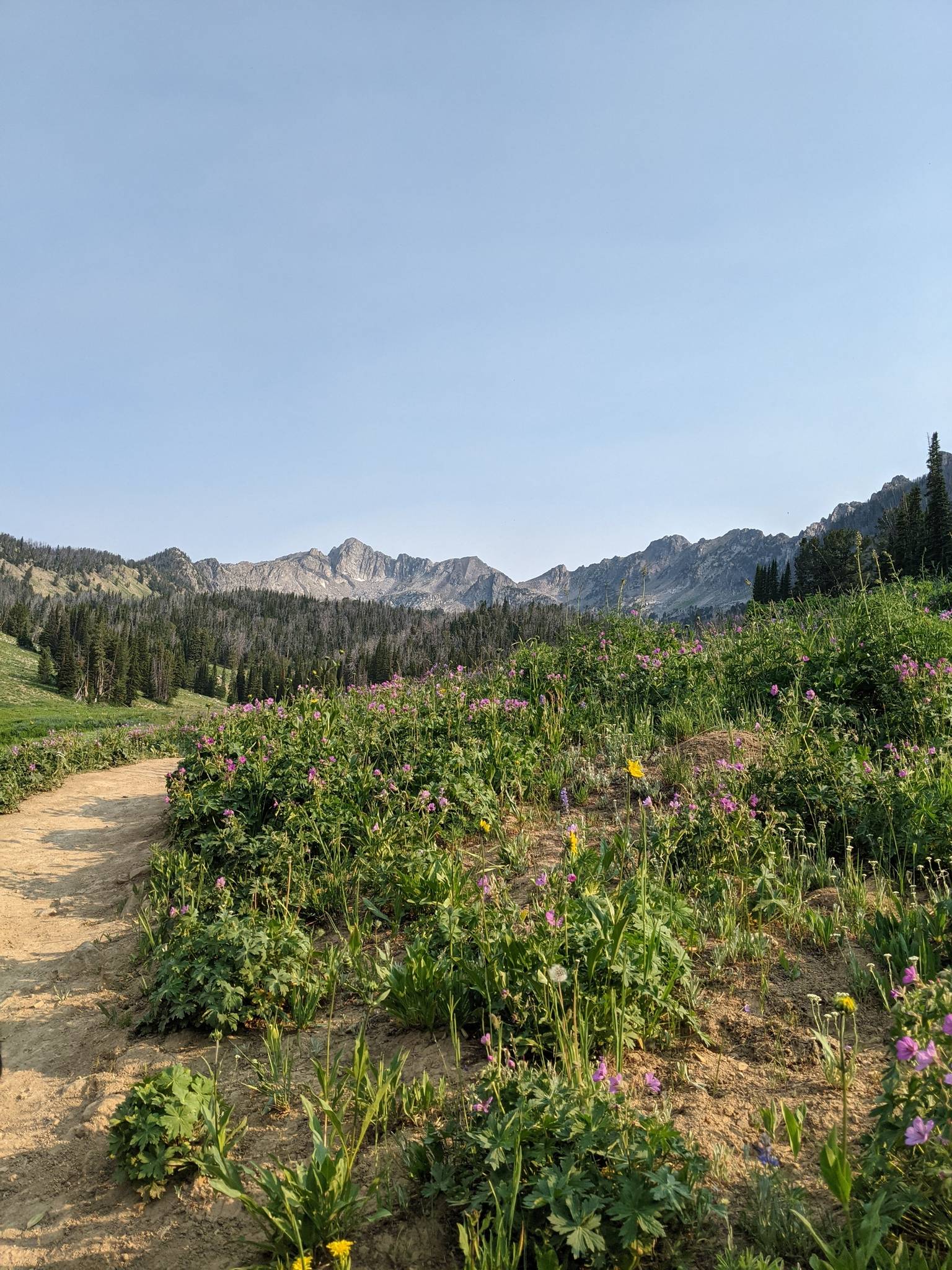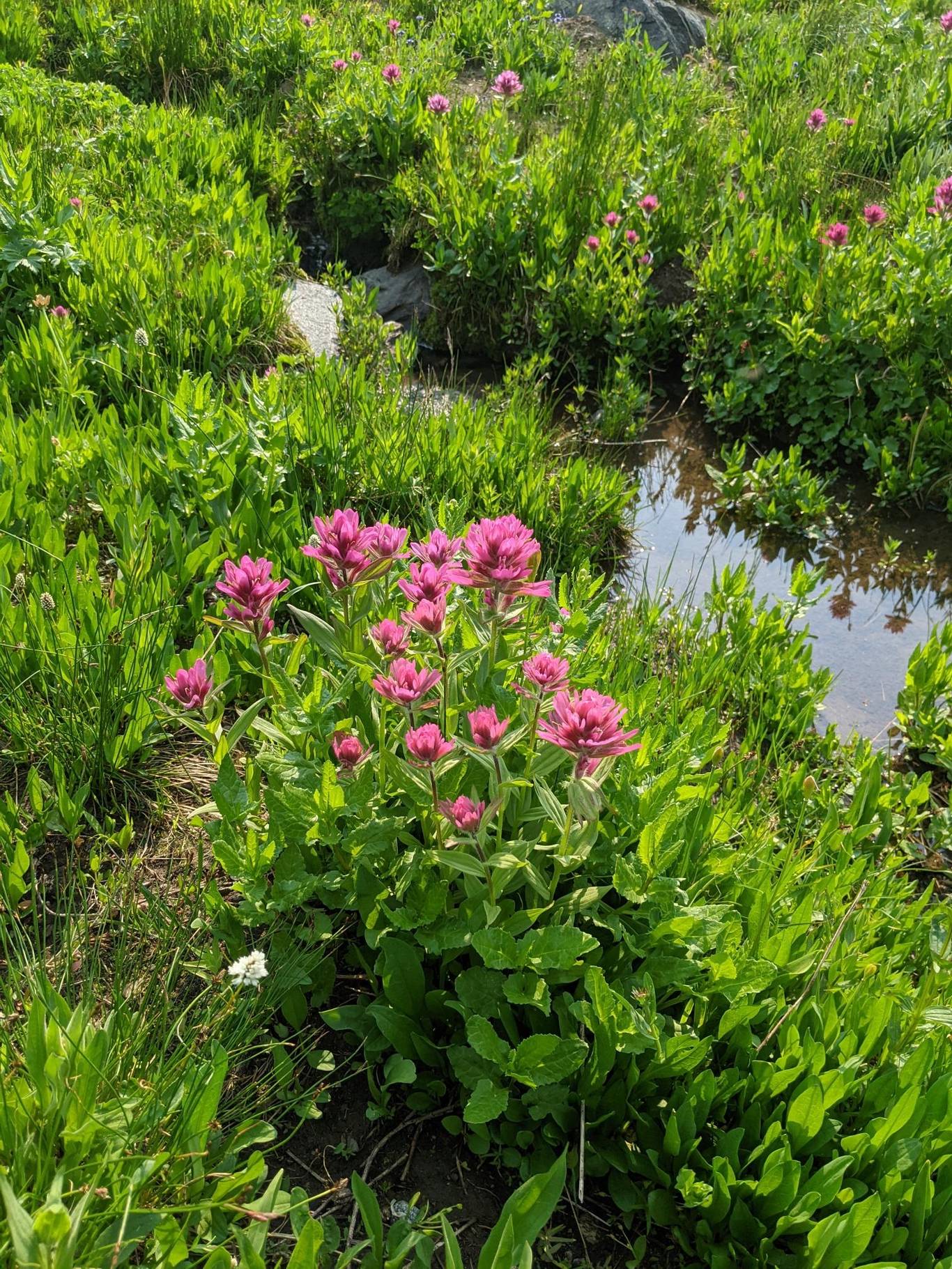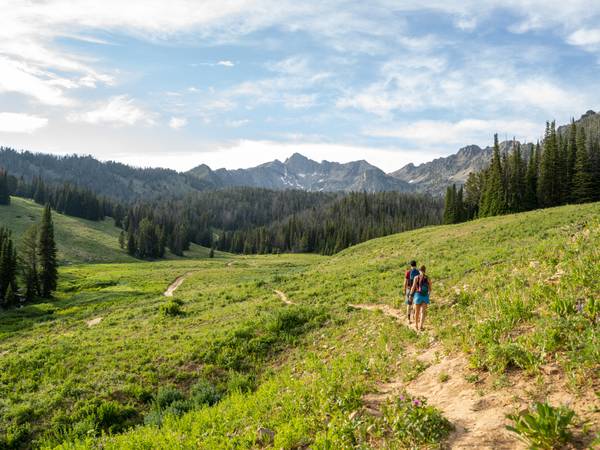
Beehive Basin: The Crown Jewel of Wildflowers
After Montana’s long, snowy winters, summer here can feel like heaven. And there’s nothing quite like the array of wildflowers that paint the high country in brilliant colors from June through August.
Just north of Big Sky Resort, Beehive Basin is one of the most accessible spots in the region to catch the summer bloom. Between June and August, nearly 300 species of wildflowers grow in the basin, according to Montana State University botanist Matt Lavin.
With dramatic alpine peaks jutting above the glacially carved basin, it’s a must-visit when you’re in town. Hike three miles out a moderate-difficulty trail to a stunning subalpine lake, or just stroll the lower benches and take in the beauty. You can’t go wrong either way.



In June, look for the splashes of yellow arrowleaf balsamroot, punctuated by the dark purple of larkspur, white spring beauties, and delicate bluebells. If you’re lucky enough to be here midsummer, your hike will be a rainbow of yellow columbine and arnica, purple lupine, pink geranium, red paintbrush, and so many others.
Venture further into the basin past the lake, and you’ll catch alpine species like the bright pink monkey flower or many kids’ favorite, elephant’s head—look closely at the stem to see a stack of tiny pink, purple or white petals resembling an elephant’s trunk and ears. Higher yet, among the boulders, crags, and 10,000-foot peaks, are the pincushion-like white-margin phlox and the breathtakingly beautiful sky pilot, with its elegant blue petals.


Beehive’s incredible range of plant life is indicative of a healthy ecosystem, Lavin said, noting that it hasn’t been overgrazed, that construction footprints have been localized, and that the Forest Service has managed it for biodiversity. Lavin also said that because the basin ranges from 7,900 feet at the trailhead up to above 10,700 feet, the varied elevation and topography create many different habitats.
Additionally, explains Brian Smithers, another MSU ecologist, there is a lot of groundwater in Beehive in the form of melted snow and summer rains and there are very few invasive species.
“It’s not a rarity, what you have in Beehive,” Smithers said. “You will find these sorts of areas all over the northern Rockies. What’s rare is its accessibility—how easy it is to be on that trail and in that situation.”
But because Montana’s glorious summer months are so fleeting, being in the right place at the right time can feel a magical, rare moment indeed.



IF YOU GO:
Go Early. Beehive is a popular hike, so if you get an early start you’re more likely to catch that moment of solitude you’ve been seeking—and a parking spot at the trailhead!
Leave No Trace. Please stay on the trail, to avoid trampling the flowers, grasses, and other plants so important to the wildlife habitat in Beehive Basin. Respect any wildlife you see from a safe distance, and carry out everything you bring with you.
Take Only Photos. As much as we love wildflowers, please refrain from picking them, and stay on the trail. Those same flowers turn into seeds, which are what maintain such a healthy and biodiverse environment for all to enjoy.
Explore! While Beehive is a favorite of locals and visitors alike, there are many fantastic hikes in the Big Sky area.
Emily Stifler Wolfe is a writer and business consultant based in Bozeman, Montana, and a former ski patroller in Big Sky. Find her at emilystiflerwolfe.com.
More to Explore

Best Hikes in Big Sky, Montana
Exploring the resort and its surroundings by foot is a great way to get immersed in Montana’s wild landscapes
Read More







